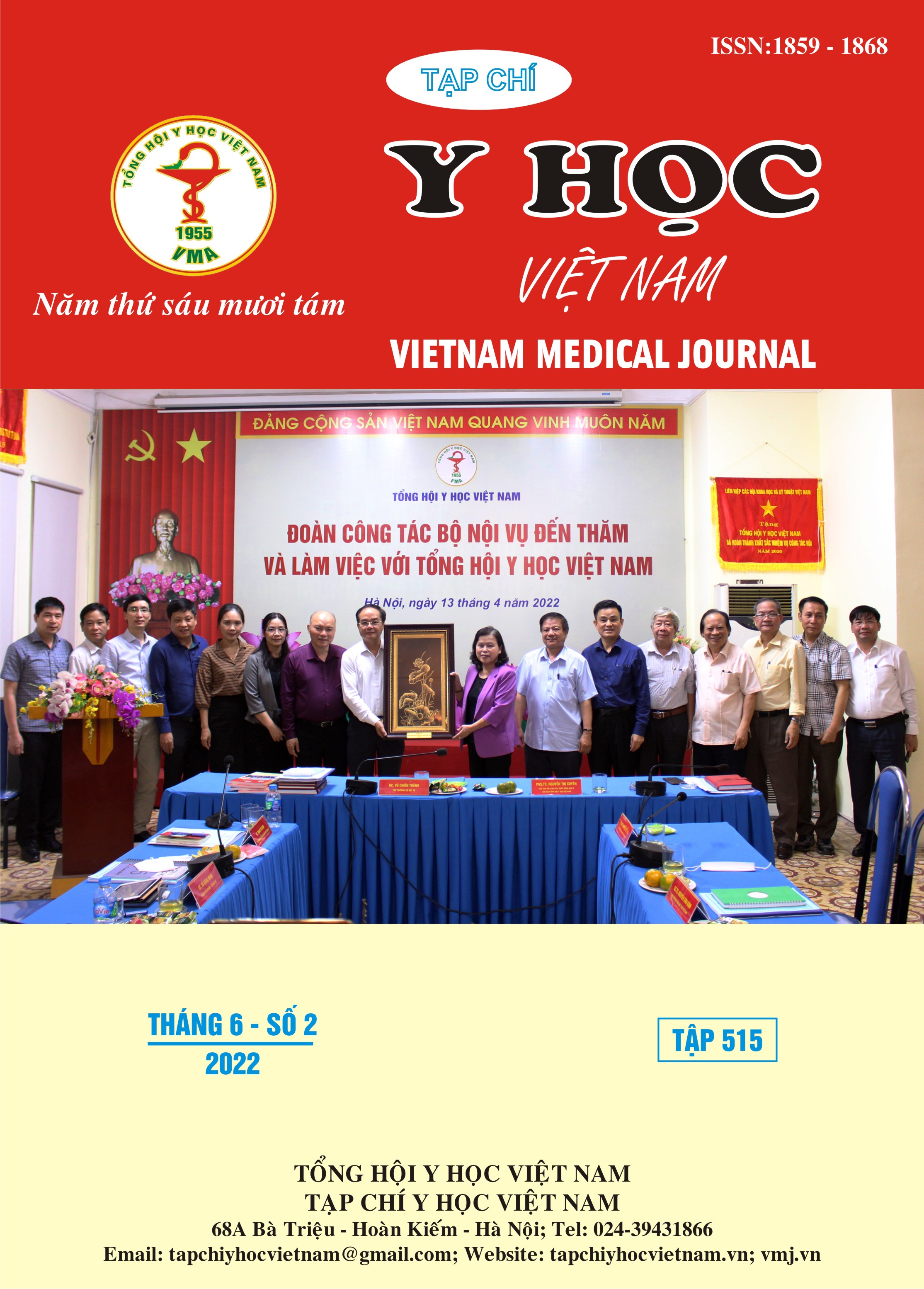KÍCH THƯỚC GIẢI PHẪU ĐỊNH KHU VÙNG RĂNG CỐI LỚN THỨ NHẤT HÀM DƯỚI TRÊN CONEBEAM CT
Nội dung chính của bài viết
Tóm tắt
Mục tiêu: xác định các khoảng cách đến ống răng dưới của các cấu trúc giải phẫu vùng răng cối lớn thứ nhất hàm dưới ở người Việt Nam khảo sát trên phim CBCT. Đối tượng và phương pháp: Nghiên cứu được thực hiện trên 166 bệnh nhân chụp phim CBCT theo chỉ định của bác sĩ tại Trung tâm CT nha khoa Nguyễn Trãi, TPHCM, trong thời gian từ 10/2015 đến 6/2016. Phim CBCT được chụp bằng máy chụp phim Picasso Trio (Ewoo Vatech, Korea). Hình ảnh CBCT thu thập từ trung tâm CT đạt tiêu chuẩn chọn mẫu được quan sát trên máy tính màn hình phẳng 14 inches, độ phân giải 1366 x 768 pixel với phần mềm EzImplant CD viewer. Ghi nhận vị trí răng (răng 36 và răng 46), phim cần đo được chuyển về chế độ xem gốc ban đầu (thao tác Reset all), với độ phóng đại 1,5 lần. Trong mặt phẳng ngang (Axial) di chuyển gốc trục tọa độ đến chính giữa mỗi chân răng của răng cối lớn thứ nhất hàm dưới cần đo, đường cắt đứng dọc theo hướng ngoài – trong, chia chân răng thành hai phần tương đối bằng nhau. Trong mặt phẳng đứng dọc (Sagittal) điều chỉnh đường cắt đứng dọc theo trục mỗi chân răng cần đo. Tiến hành vẽ và đo đạc trong mặt phẳng đứng ngang (Coronal) (độ phóng đại 2 lần). Xác định các kích thước cần đo. Kết quả: Đối với các RCL thứ nhất hàm dưới có hai chân, khoảng cách từ chóp chân gần và chân xa đến ống răng dưới lần lượt là 6,41±2,67mm, 5,82±2,79mm. Đối với các RCL thứ nhất hàm dưới có ba chân, khoảng cách từ chóp chân gần, chân xa ngoài và chân xa trong đến ống răng dưới lần lượt là 7,02±2,16mm, 6,89±2,26mm, 8,02±2,33mm. Kết luận: Càng lớn tuổi, ống răng dưới càng nằm xa các chóp chân răng. Có sự khác biệt về khoảng cách giữa ống răng dưới so với một số mốc giải phẫu. trong đó các kích thước ở nam lớn hơn ở nữ.
Chi tiết bài viết
Từ khóa
Khoảng cách, ống răng dưới, răng cối lớn thứ nhất hàm dưới, ConeBeam CT
Tài liệu tham khảo
2. Cao Thị Thanh Nhã (2012), "Đặc điểm ống răng dưới vùng răng sau trên hình ảnh CT", Luận văn Thạc sĩ Y học, Khoa Răng Hàm Mặt, Đại học y dược Thành phố Hồ Chí Minh.
3. Denio D., Torabinejad M. ,Bakland L. K. (1992), "Anatomical relationship of the mandibular canal to its surrounding structures in mature mandibles". J Endod, 18(4), 161-165.
4. Friedman S. ,Mor C. (2004), "The success of endodontic therapy--healing and functionality". J Calif Dent Assoc, 32(6), 493-503.
5. Fudalej P., Kokich V. G. ,Leroux B. (2007), "Determining the cessation of vertical growth of the craniofacial structures to facilitate placement of single-tooth implants". Am J Orthod Dentofacial Orthop, 131(4 Suppl), S59-67.
6. Gulabivala K., Opasanon A., Ng Y. L., et al. (2002), "Root and canal morphology of Thai mandibular molars". Int Endod J, 35(1), 56-62.
7. Juodzbalys G., Wang H. L. ,Sabalys G. (2011), "Injury of the Inferior Alveolar Nerve during Implant Placement: a Literature Review". J Oral Maxillofac Res, 2(1), e1.
8. Lamas Pelayo J., Penarrocha Diago M. Marti Bowen E. (2008), "Intraoperative complications during oral implantology". Med Oral Patol Oral Cir Bucal, 13(4), E239-243.


